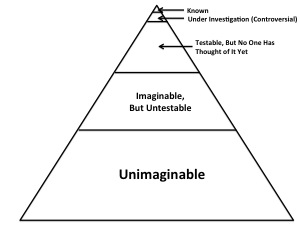I’m writing a new series over at Mother Nature Obeyed. Here’s the first post: An Ancestral Perspective on Vitamin D Status, Part 1: Problems With the Naked Ape Hypothesis of Optimal Serum 25(OH)D Here’s the summary from the Daily Lipid Video Blog: Enjoy!
The Scientific Method
The Scientific Approach of Weston Price, Part 7: Placing Price’s Work in Context
I just posted the seventh and final installment in my series over at Mother Nature Obeyed laying out the most salient points from my talk about Weston Price on Sean Croxton’s Real Food Summit last September. The talk was free for a few days, but to listen to it now you have to purchase the …
The Scientific Approach of Weston Price, Part 2: Problems With Comparing Different “Racial Stocks,” With Inuit Adaptations in Vitamin D Metabolism as an Example
I’m continuing my series over at Mother Nature Obeyed laying out the most salient points from my talk about Weston Price on Sean Croxton’s Real Food Summit last September. The talk was free for a few days, but to listen to it now you have to purchase the whole summit for $99. If you do …
The Scientific Approach of Weston Price, Part 1: Nature’s Closest Thing to an RCT
A lot of folks gave me great feedback on my talk about the scientific approach, perspective, and conclusions of Weston Price on Sean Croxton’s Real Food Summit last September. The talk was free for a few days, but to listen to it now you have to purchase the whole summit for $99. If you do …
Being Statistically Significant Is Nothing Like Being Pregnant
New post over on Mother Nature Obeyed: Being Statistically Significant Is Nothing Like Being Pregnant Enjoy!

When Standing At the Brink of the Abyss, Staring Into the Great Unknown, We Randomize
In any experiment, randomization is the central criterion necessary to make an inference about cause and effect. This is true whether we are studying inanimate objects, isolated proteins, cells, animals, or people. Randomization helps us remove the influence of both known and unknown confounders. The ultimate confounders are choice and the passage of time. People …
The Trouble With Measuring AGEs — Butter and More
This post is basically a technical footnote to my next post on advanced glycation endproducts (AGEs) and all subsequent posts on AGEs explaining why I will give preference to certain studies that use what I consider reliable methods for measuring these compounds. In my previous posts, “Is Butter High in AGEs?” and “Is the Receptor …
How to Do a Proper Self-Experiment, and Why Your “N” Doesn’t Technically Equal “1”
Aravind recently suggested in the comments that I write a blog post about a discussion he and I had in the hallway at the Ancestral Health Symposium about “n=1 experiments.” The thrust of this discussion was that if you want to do a true self-experiment where you can definitively demonstrate cause and effect, you can actually conduct a …
Gary Taubes on Cherry-Picking and Paradigm Shifts (A Brief Thought on Science)
Warning: A Serious Blog Post Occurs Somewhere Below Some controversy recently erupted in the Twitter-sphere when a number of us including Dave Dixon and Dallas Hartwig were recently discussing Denise Minger’s angular hypothesis of atherosclerosis, in which she proposed that increased concentrations of serum bananas and increased concentrations of other plasma constituents with pointy ends or sharp edges penetrate the …
Against Dietary Dogmatism
According to the Online Etymology Dictionary, the word dogma comes from the Greek dogmatos, literally meaning “that which one thinks is true.” This dictionary further states that it derives from dokein, meaning “to seem good” or “to think,” a root which also gave rise to the English word decent. Basil the Great, a fourth-century bishop …
